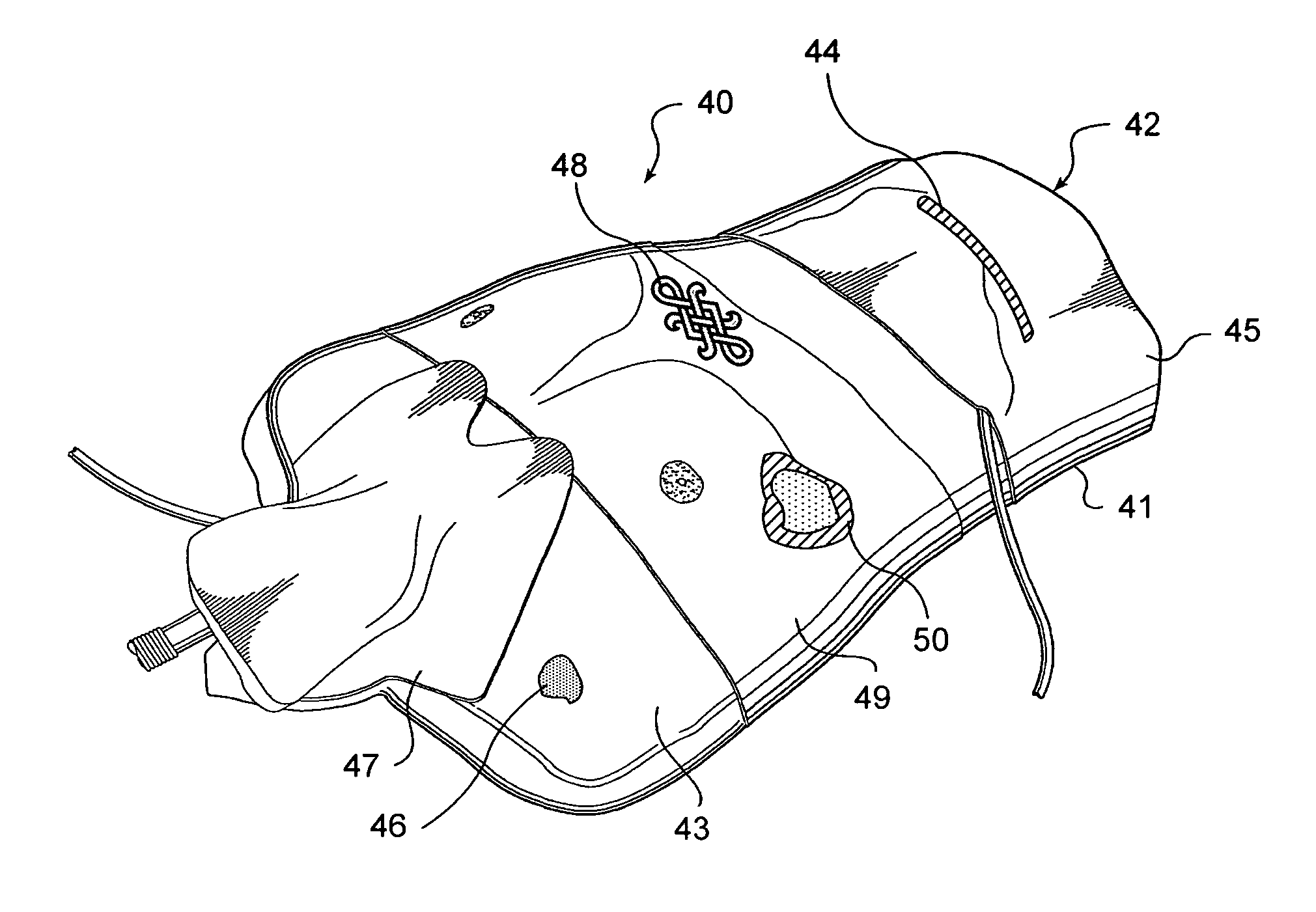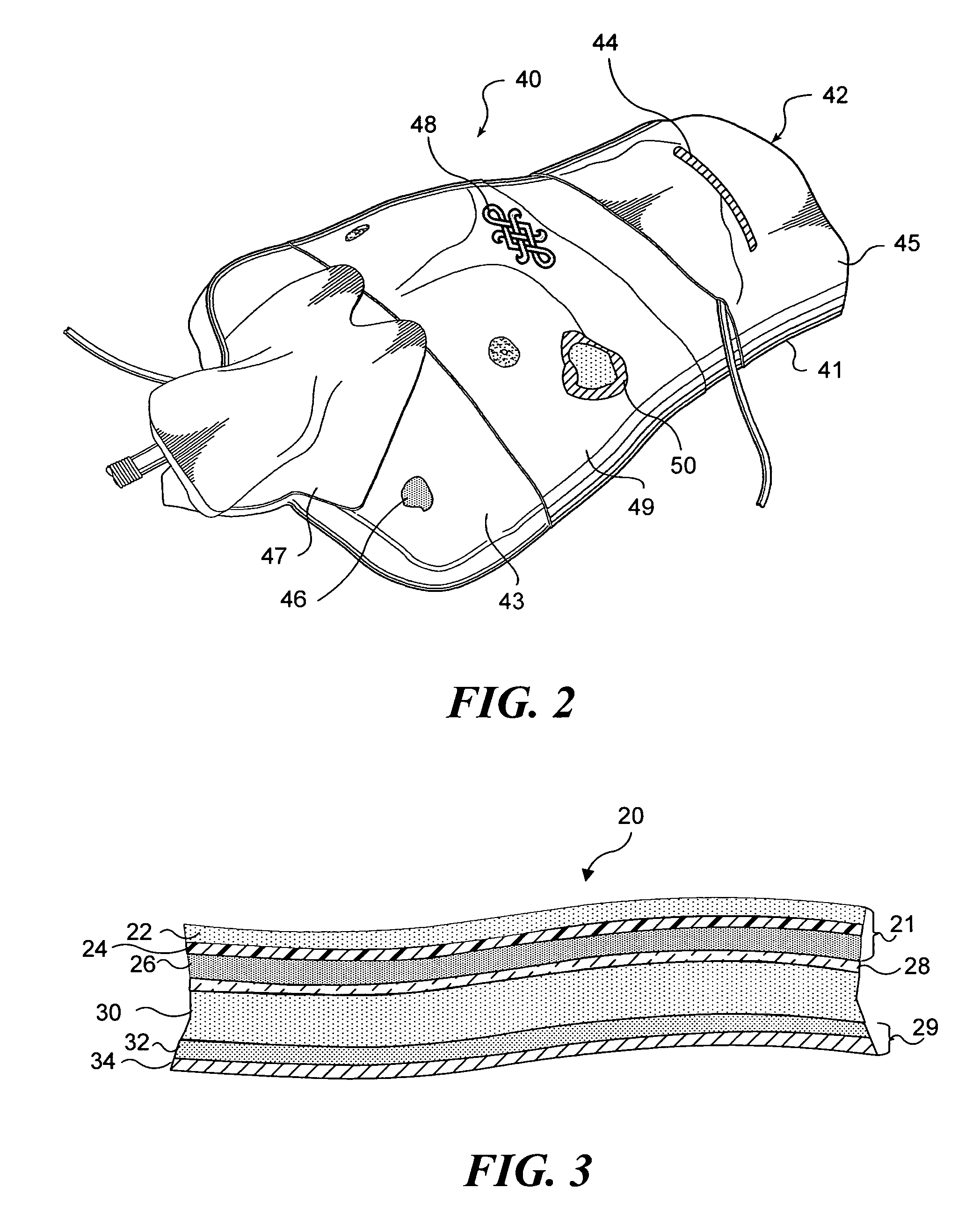Simulated anatomical structures incorporating an embedded image layer
a technology of anatomical structures and embedded images, applied in the field of simulated physiological structures, can solve the problems of inability to paint elastomeric materials to provide a real life appearance of tissue, uniform appearance to be very lifelike, and inability to achieve the effect of enhancing the realism of the simulated tissue structure, enhancing the tactile response, and increasing the resistance to incision
- Summary
- Abstract
- Description
- Claims
- Application Information
AI Technical Summary
Benefits of technology
Problems solved by technology
Method used
Image
Examples
Embodiment Construction
Overview of the Present Invention
[0027]Medical models have been developed that provide very realistic tactile representations of tissue by incorporating layers of elastomeric materials that simulate dermal layers, muscle, fat, and other soft tissue structures, and organs. Such elastomeric materials can be dissected, much like actual tissue, and provide tactilely realistic sensations to the student. However, elastomeric materials cannot readily be painted to achieve a visually realistic model, the way that hard plastic materials can be, because paint does not adhere well to elastomeric materials, and does not produce a visually realistic effect.
[0028]In the present invention, an image layer is used to enable very visually realistic medical models to be achieved, even when elastomeric materials are used for creating the models. An image of an appropriate physiological structure is printed onto a substrate to generate an image layer. That image layer is then incorporated into a simulat...
PUM
 Login to View More
Login to View More Abstract
Description
Claims
Application Information
 Login to View More
Login to View More - R&D
- Intellectual Property
- Life Sciences
- Materials
- Tech Scout
- Unparalleled Data Quality
- Higher Quality Content
- 60% Fewer Hallucinations
Browse by: Latest US Patents, China's latest patents, Technical Efficacy Thesaurus, Application Domain, Technology Topic, Popular Technical Reports.
© 2025 PatSnap. All rights reserved.Legal|Privacy policy|Modern Slavery Act Transparency Statement|Sitemap|About US| Contact US: help@patsnap.com



